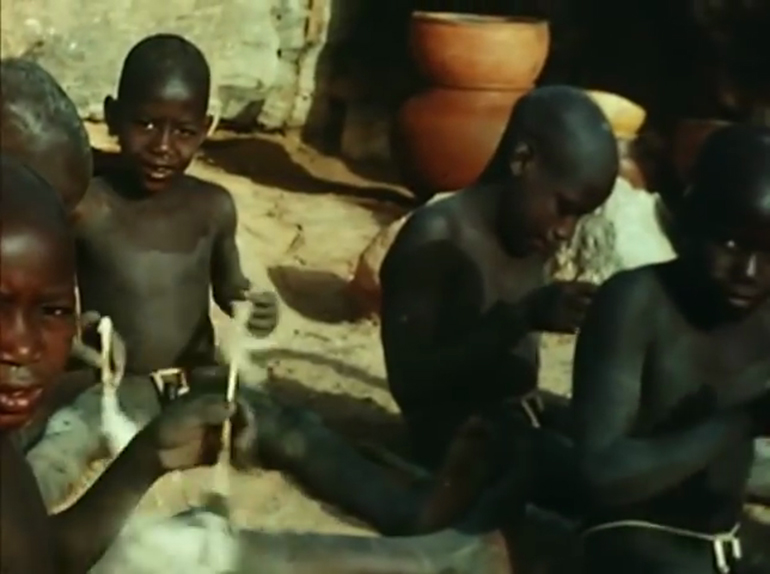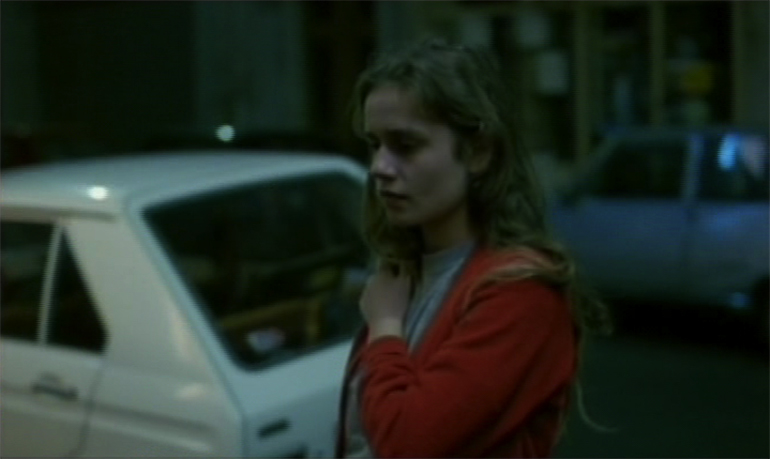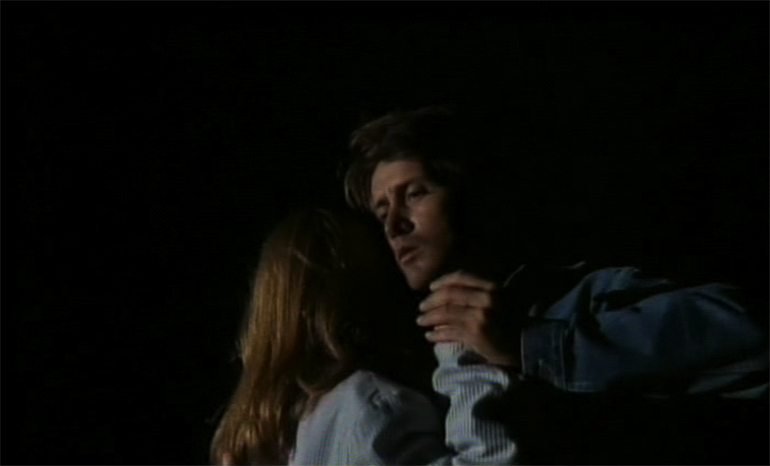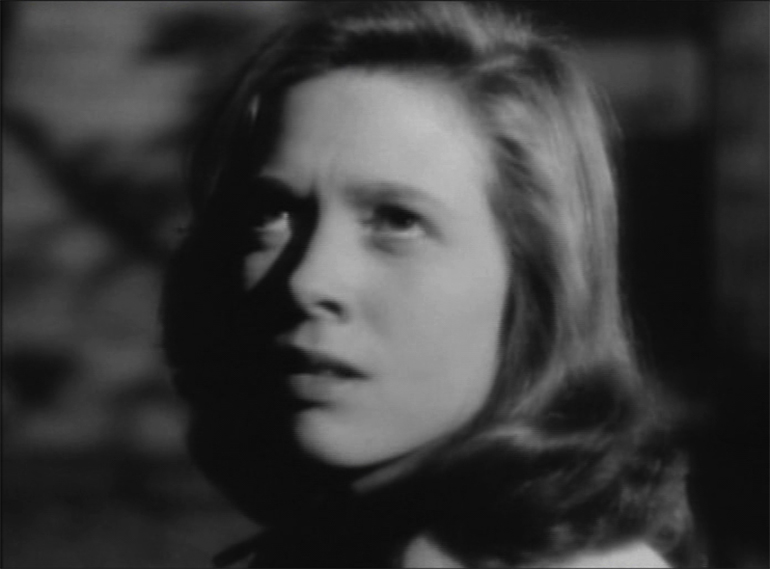TO SHOOT THROUGH EMOTION, TO SHOW THOUGHT PROCESSES. THE MONTAGE OF FILM FRAGMENTS IN THE CREATIVE PROCESS
Gonzalo de Lucas
 FORWARD
FORWARD
 DOWNLOAD
DOWNLOAD
 ABSTRACT / KEYWORDS / ARTICLE / BIBLIOGRAPHY / ABOUT THE AUTHOR
ABSTRACT / KEYWORDS / ARTICLE / BIBLIOGRAPHY / ABOUT THE AUTHOR

In 1989, Jean Rouch located the instant that gave origin to his films in the emotion he had felt while shooting for the first time, fifty years earlier, some children in Niger: ‘I had five rolls of Kodachrome, that is to say, fifteen minutes to shoot a ritual I had never seen before. We were as excited as those children were scared. And this emotion saved the film, to look at them through the camera, with their anguish, their pain, and the happiness of not having cried. By setting up my camera again every twenty seconds, I was editing: changing the angle and the framing, solely inspired by that emotion’ (ROUCH, 2009: 118).
Perhaps emotion, together with experience, is the most complicated and unusual thing to convey in film schools, it is the least academic and the most elusive. And yet, in its educational project, Cinema en curs has taken on the challenge of presenting it as a crucial gesture for creativity. The film fragments selected by the students to make the DVDs which they then screen in the classroom, generates their first steps towards the transition –and meeting– from the emotion they want to show to the emotion of creating the shot; between the characters’ feelings –the experience within the shot or the story– and the enthusiasm of translating reality into film through framing, rhythm, light. How do you film an emotion through an emotion?
It seems fitting not to apply this first encounter to the work done on shoot, but to place it instead on the experience of the viewer, on the screening inside the classroom, just where the grammar of film is usually dissected or used as an illustration for analytical discourse. The screening here becomes an experience, pieces of memorable and immeasurable time... The fundamental idea is that every shot exists (and is chosen) because it creates an aesthetic tension between the camera and what is being filmed: the story, the plot, the emotion, is that of the shot itself, creating itself and transforming, generating things that were unseen a second before, or the astonishment of what appears all of a sudden, or the desire for the instant to remain and not get lost, or the sudden gasp due to an unexpected change of image or rhythm... This specific criterion leaves out the scenes or moments that are so common in cinema where shots are functional or utilitarian, the transitions or narrative links. It’s not a historicist or technical criteria, nor one that claims that cinema changes or evolves, but a recognition, a demonstration, a putting together of common gestures that run through the creative process, which doesn’t define eras, styles, or places.
This comparative understanding of cinema is usually composed, in the DVDs of Cinema en curs, through a cinematic relation, such as that of ‘character, world, emotions’, which then affects the students’ exercises and films. In the DVD itself, the extracts are organised under categories and subcategories that group them together, for example, ‘space between camera and character’, which itself is structured into ‘movement of approach or distancing’, ‘elastic threads’, ‘interposed elements’; or ‘the value of the face’, which is split into ‘showing emotions by hiding the gaze’, ‘filming from behind to intensify the foreground’, ‘close ups’, ‘insistence’.
The first effect is that between cinema, the world, and emotion, any estrangement, frontier, or distance that the student may feel before, let’s say, an excerpt from Shimizu, Hsiao-Hsien, Sissako, Olmi, or Cassavetes, disappears. Names that, unknown to some students, turn into recognisable filmmakers after just a few sequences. Through these excerpts, film is not situated within film, but in its opening up to the world, according to a process of increased awareness and of a broadening of perceptive knowledge which will then stimulate desire or rigour in the filming of the kids’ surroundings, where aesthetic possibilities, hypotheses of shots and films are discovered; they will see and manifest everything in a different, unexpected way, using their camera to turn a fragment of the world into images and sounds, into other aesthetic worlds.
When Henri Langlois was asked what the Cinémathèque Française’s main contribution to the formation of the nouvelle vague had been, he replied that it was the lack of subtitles on the copies they screened, due to a shortage of money (LANGLOIS, 1986: 94-96). At the time, the theatre at the Cinémathèque had a seating capacity of sixty, but many of those viewers were to generate new forms and methods of filmmaking. If they managed to do it, it was partly because when they watched the films they probably paid attention to the images and sounds, unaffected by the meaning of the dialogue and of narrative plots. In an article about Mizoguchi, Jacques Rivette wrote his famous sentence: ‘If music is a universal idiom, so too is mise en scène: it is this language, and not Japanese, that has to be learned to understand “Mizoguchi”’ (RIVETTE, 1995: 95).
Although the selected extracts do include subtitles, the principles of choice and grouping are the same: to preserve the mystery, musicality, and attraction of the visual and aural forms over explanatory discourse or literal meaning, to privilege rhythm over words. External discourses, embedded into films at many film schools before watching the films, are not incorporated or translated here: solidified points of view, clichés, prejudices, grammar rules, trends. The student’s experience emerges out of watching the fragment without this cultural filter, and taking it in as an artistic event, reflecting upon the external and internal thoughts materialised through it in hindsight. The former deals with the decisions taken by filmmakers to compose the sensitive and meaningful aspects of the shot; the latter, with the way the shots are linked to a character who (often off-centre, or not in a hierarchical composition) is located in a space that will be subjectivised (or lived) by the his affective state and for what he is thinking. This is where the student, in the midst of growing up, will turn to his intimate, immediate experience, to his being in the world, to find cinema; that which at the beginning of the course surely seemed far removed from him, a screen that deals only with the life of others, that he would have never associated with his own body and experience.
And so we return to the beginning of this article: how can we transmit the emotion that Jean Rouch found to be at the origin of his filmmaking practice? When Walter Murch defined his editing rule of six, he clearly pointed out: ‘At the top of the list is Emotion, the thing you come to last, if at all, at film school largely because it’s the hardest thing to define and deal with’ (MURCH, 2001: 18). It would be enough, for example, to simply select three fragments out of those presented in former editions of Cinema en curs to think about how an emotion may emerge out of the way a shot has been cut.
In To Our Loves (À nos amours, 1983), Maurice Pialat films Suzanne (Sandrine Bonnaire) sitting on a bench at a bus stop; we see her through the bus shelter, on a rainy afternoon, in an image that captures the feeling of unease and emotional disillusionment, solitude, and interiority immersed in a city; the way the shots of her body are edited seem to insist on the duration of experience, unquantifiable, of when we learn to live with our emotions, to carry them without yet knowing what to do with them or how to measure their weight; and just then we cut to a shot where we see her standing in the street, a few hours later. It has stopped raining and it’s night time already, but if we look closely, we’ll that there are some frames where the girl, before looking up and starting to walk, appears to be waiting to hear the word action –she touches her nose, one would say she is cold and tired–, before she begins to act, and moves. Pialat has included these initial frames, which are usually discarded and that belong to the actress more than to her character, leftover instants of the shoot before the acting begins, but which contain a physical and emotional liveliness where actress and character coexist. It has probably been a long shoot, the teenager Sandrine Bonnaire –in her first film role– is tired, and Pialat takes advantage of her real experience to inject it into the aesthetic experience of the film, and into the truth of the character, intertwining life and film.
In Badlands (Terrence Malick, 1973), Kit (Martin Sheen) and Holly (Sissy Spacek), two young fugitive lovers, travel by car at night towards ‘a magical land beyond the reach of the law’, but have stopped sharing the experience: he is still thinking about crossing the border and continuing with his adventure, she has drawn into herself (‘I’d stopped even paying attention to him’), she no longer believes in or shares Kit’s trip or his showing off; their love and their rhythms have gone out of sync. And right then, a song by Nat King Cole plays on the radio. While sustaining the sound continuity, a cut takes us from the interior of the car to their bodies coming out of the darkness, dancing in each others arms, as if they were floating in some other space. Kit half whispers to himself, ‘if I could sing a song about the way I feel right now’, and the viewer says to himself how he wishes that moment would last, that cinema is made to make us wish for things to last a little longer, and to feel the pain of their passing without being able to hold onto them. Kit and Holly’s bodies, in the darkness, are lit by a strip of light created by the headlights which cuts across the composition like a horizontal line, in a poetic image that rhymes with ‘the very edge of the horizon’, which opened the scene (the cloud of dust made by the car, creating a sort of ‘frontier’), and with the next shot, a horizon at daybreak, a dawning interpreted perhaps as a twilight, a dying light.
Finally, the famous editing of the final sequence in They Live By Night (Nicholas Ray, 1949), when Keechie contemplates Bowie’s lifeless body. In a fairly aesthetic action, which conventional cinema would have only granted a single shot, maybe two –Keechie’s head and back leaning down, and her gestures while getting up–, Nicholas Ray, perhaps due to a technical defect in one of the shots, dedicates four, of varying scales, in a sort of energetic insistence, in an emotion that bursts through, leaving no time to think, as if there wasn’t enough time to focus on it or frame it correctly; Keechie picks up the letter that Bowie has written to her, and the cut leads to a shot where we follow her from behind, walking slowly, in a change of rhythm and cadence that suddenly fills the emotion with sweetness and introspection, as if we had gone from the exterior (of her energy, of her action) to the interior of the body, to the thoughts of the girl who finally turns towards the camera, finishes reading the letter, repeats the last words in silence, whose voice wanes as the light fades and darkness offers the sparkle of her cheek bones, wet with tears. Here darkness has allowed us to see better, or to see something that remained unseen. The gesture of emotion has led us towards the thinking. Thus ends the first film by Nicholas Ray, who, at the end of his life, over twenty years later, would make his last film in collaboration with his students at Harpur College in New York, where ‘we are learners, doers, teachers’. (RAY, 1993: 7).
Translated from the Spanish by Alex Reynolds.
ABSTRACT
In the project Cine en curso, viewings of film fragments, selected and interrelated to stimulate students creative processes, generate a methodology of comparative film revolving around ideas of how to film an emotion and through a cinematic emotion. The choice of shots through which an aesthetic tension is created between the camera and what is being filmed brings about a recognition and montage of common gestures running through the creative process that don’t compartmentalize eras, styles, or places. The student’s increased awareness, his opening up to the world, and his aesthetic experience, is encouraged through the viewing of fragments without the cultural filter that are usually activated in film schools. In this way, they are taken in as artistic events, reflecting upon the external and internal thoughts materialised through them in hindsight. The last section of the article uses the comparative commentary of three specific fragments from To Our Loves (À nos amours, Maurice Pialat, 1983), Badlands (Terrence Malick, 1973) and They Live by Night (Nicholas Ray, 1949) to talk about how emotions are created through the editing of a shot.
KEYWORDS
Cinema en curs, film excerpts, comparative montage, creative process, transmission, experience of the student, emotion of the filmmaker and of the character, cutting of shot, external thought of the shot, interior thought of the shot.
BIBLIOGRAPHY
BERGALA, Alain (2007). La hipótesis del cine. Pequeño tratado sobre la transmisión del cine en la escuela y fuera de ella. Barcelona. Laertes.
COMOLLI, Jean-Louis (2004). Voir et pouvoir. L’innocence perdue: cinéma, télévision, fiction, documentaire. París. Verdier.
LANGLOIS, Henri (1986). Trois cent ans de cinéma. París. Cahiers du cinéma/ Cinémathèque Française/Fondation Européene des Métiers de l’Image et du son.
MURCH, Walter (2001). In the Blink of an Eye. A perspective on film editing. Los Angeles. Silman-Jess Press.
RAY, Nicholas (1993). I Was Interrumpted. Nicholas Ray on Making Movies. RAY, Susan (Ed.). Berkeley. University of California Press.
RIVETTE, Jacques (1958). Mizoguchi vu d’ici. BAECQUE, Antoine (ed.), La politique des auteurs. París: Cahiers du Cinéma, pp. 94-96.
ROUCH, Jean (2009). Cinéma et anthropologie. COLLEYN, Jean-Paul (Ed.). París. Cahiers du Cinéma.
GONZALO DE LUCAS
Lecturer in Audiovisual Communication at Pompeu Fabra University. Film programmer for Xcèntric, Centre of Contemporary Culture of Barcelona. Director of the post-graduate programme Audiovisual Editing at IDEC/Pompeu Fabra University. He has written the books Vida secreta de las sombras (Ed. Paidós) and El blanco de los orígenes (Festival de Cine de Gijón) and co-edited Jean-Luc Godard. Pensar entre imágenes with Núria Aidelman (ed. Intermedio, 2010). He has written articles for 20 anthologies and publications such as Cahiers du Cinéma-España, Sight and Sound and the supplement Cultura/s in La Vanguardia.
Nº 5 PEDAGOGIES OF THE CREATIVE PROCESS
Editorial. Pedagogies of the Creative Process
Gonzalo de Lucas
DOCUMENTOS
The Goodwill for a Meeting: That's cinema
Excerpts by Henri Langlois, Jean-Louis Commolli, Nicholas Ray
FILMS UNDER DISCUSSION. INTERVIEWS
Filmmaker-spectator, Spectator-filmmaker: José Luis Guerin's Thoughts on his Experience as a Teacher
Alain Bergala
Filmmaker-spectator, Spectator-filmmaker: José Luis Guerin's Thoughts on his Experience as a Teacher
Carolina Sourdis
ARTICLES
In Praise of Love. Cinema en Curs
Núria Aidelman, Laia Colell
A Daring Hypothesis
Jonás Trueba
To Shoot through Emotion, to Show Thought processes. The Montage of Film Fragments in the Creative Process
Gonzalo de Lucas
The Transmission of the Secret. Mikhail Romm in the VGIK
Carlos Muguiro
The Biopolitical Militancy of Joaquín Jordá
Carles Guerra
REVIEWS
AA,VV. BENAVENTE, Fran y SALVADÓ, Glòria (ed.), Poéticas del gesto en el cine europeo contemporáneo.
Marga Carnicé Mur




